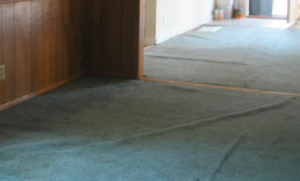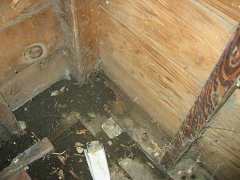 FHA guidelines state that a house has to meet MPR (minimum property standards) for existing houses, and MPS (minimum property requirements) for new construction. FHA is very concerned with the three S’s: Safety, Security, and Soundness.
FHA guidelines state that a house has to meet MPR (minimum property standards) for existing houses, and MPS (minimum property requirements) for new construction. FHA is very concerned with the three S’s: Safety, Security, and Soundness.
When a Realtor was asked what the three FHA S’s were, he replied, “Stupid, more stupid, and seriously stupid FHA appraisers,” which I thought was pretty funny, however, a little off the mark. The three FHA S’s have to do with the following:
Safety:
Per FHA, “Safety refers to the health, habitability and sanitary condition of the property.” When determining what is safe and what is not, involves some subjectivity on the appraiser’s part, while other issues are pretty straight forward. Here is a list of the some of the most common safety issues that require correcting:
 Any peeling or chipped paint on homes built prior to 1978
Any peeling or chipped paint on homes built prior to 1978- Holes in the fire door between the house and garage (doggy doors, missing dead bolts, etc.)
- Missing or damaged handrails for full set of stairs.
- Improper spacing of balusters for decks and balconies (would allow a child to climb in between the balusters).
- 2nd level sliding door not secured when there is no deck.
- Exposed wiring and/or missing outlet covers.
- Missing fire and carbon monoxide detectors.
- Missing carpet over a wood sub floor (If carpet is missing over a concrete floor not an issue-FHA considers concrete to be a permanent floor; however, most lenders may want this addressed).
- Broken or missing windows.
Some of the more challenging issues is what is considered to be minor deferred maintenance, that which doesn’t need to be corrected. The appraiser is still required to note within the appraisal all the deficiencies with the property, thus giving the underwriter the final say. Here are some of the most common deferred maintenance issues that don’t require an automatic repair:
 Worn, dated, or sagging carpet.
Worn, dated, or sagging carpet.- Cracked windows.
- Minor damaged interior walls or doors.
- Minor plumbing leaks.
- Shoddy workmanship.
Soundness:
This relates to the structure and structural components of the dwelling. These types of issues will have to be addressed, which they will either have to be repaired or certified by a professional that they’re not a problem. Some of the most common structural issues that I’ve run across are the following:
 Foundation problems (shifted and bowed walls, large cracks from settling).
Foundation problems (shifted and bowed walls, large cracks from settling).- Water damage to walls.
- Roof beyond expected life of two years; more than 3 layers of roofing.
- Decks not properly built to code.
- Additions or basement finishing that wasn’t properly built.
Security:
This is the most misunderstood of the three S’s. Most assume that if refers to securing the property from the weather, and/or intruders. However, it actually refers to the properties ability to serve as collateral for the FHA insurance fund. The main point here is the marketability of the property to serve as collateral. Here’s a list of some of the most common things that I’ve run into that can affect the marketability of a property is when it’s:
- Located near HV (high voltage) power lines (see detailed explanation).
- Located near a municple sewage treatment plant.
- Located near a major freeway or county road.
- Located near a hazardous site or landfill.
- Located near railroad tracks.
Just because the property is located near any of the above, doesn’t automatically make it ineligible for FHA financing; however, the appraiser is going to have to be able to address the marketability of the property. The best way to do this is to find similar sales that were subject to the same type of issue(s). The appraiser would then have to be able to use those comparable sales within the appraisal report to help bracket the property, and at the same time meeting all of the lender’s other guidelines and/or overlays.
No related posts.

{ 2 trackbacks }